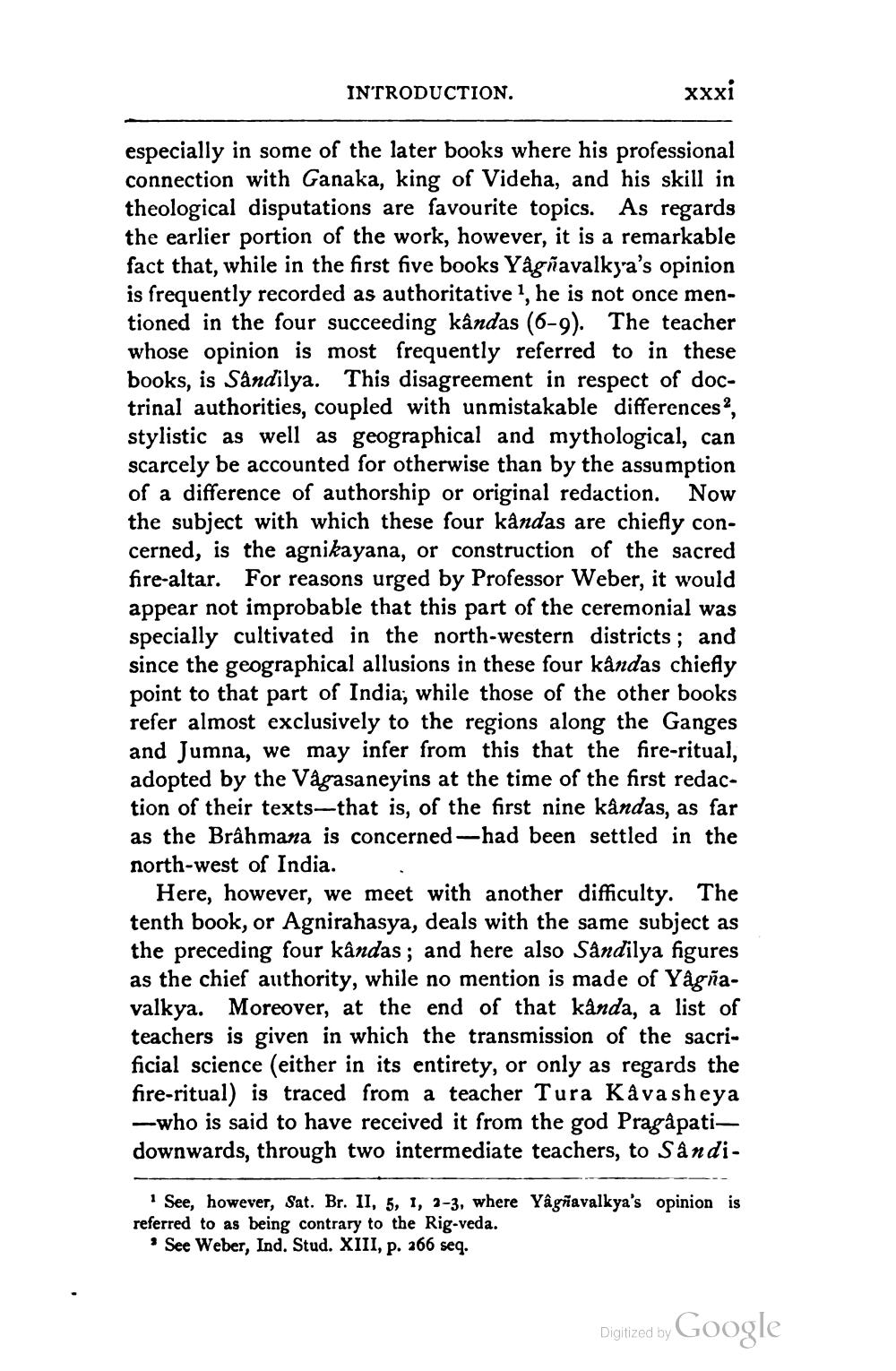________________
INTRODUCTION.
xxxi
especially in some of the later books where his professional connection with Ganaka, king of Videha, and his skill in theological disputations are favourite topics. As regards the earlier portion of the work, however, it is a remarkable fact that, while in the first five books Yågñavalkya's opinion is frequently recorded as authoritative 1, he is not once mentioned in the four succeeding kândas (6-9). The teacher whose opinion is most frequently referred to in these books, is Sandilya. This disagreement in respect of doctrinal authorities, coupled with unmistakable differences", stylistic as well as geographical and mythological. can scarcely be accounted for otherwise than by the assumption of a difference of authorship or original redaction. Now the subject with which these four kändas are chiefly concerned, is the agnikayana, or construction of the sacred fire-altar. For reasons urged by Professor Weber, it would appear not improbable that this part of the ceremonial was specially cultivated in the north-western districts; and since the geographical allusions in these four kândas chiefly point to that part of India; while those of the other books refer almost exclusively to the regions along the Ganges and Jumna, we may infer from this that the fire-ritual, adopted by the Vågasaneyins at the time of the first redaction of their texts—that is, of the first nine kândas, as far as the Brâhmana is concerned- had been settled in the north-west of India.
Here, however, we meet with another difficulty. The tenth book, or Agnirahasya, deals with the same subject as the preceding four kândas; and here also Sândilya figures as the chief authority, while no mention is made of Yågñavalkya. Moreover, at the end of that kânda, a list of teachers is given in which the transmission of the sacrificial science (either in its entirety, or only as regards the fire-ritual) is traced from a teacher Tura Kåva sheya --who is said to have received it from the god Pragâpatidownwards, through two intermediate teachers, to Sandi
"See, however, Sat. Br. II, 5, 1, 1-3, where Yâgñavalkya's opinion is referred to as being contrary to the Rig-veda.
* See Weber, Ind. Stud. XIII, p. 266 seq.
Digitized by Google




